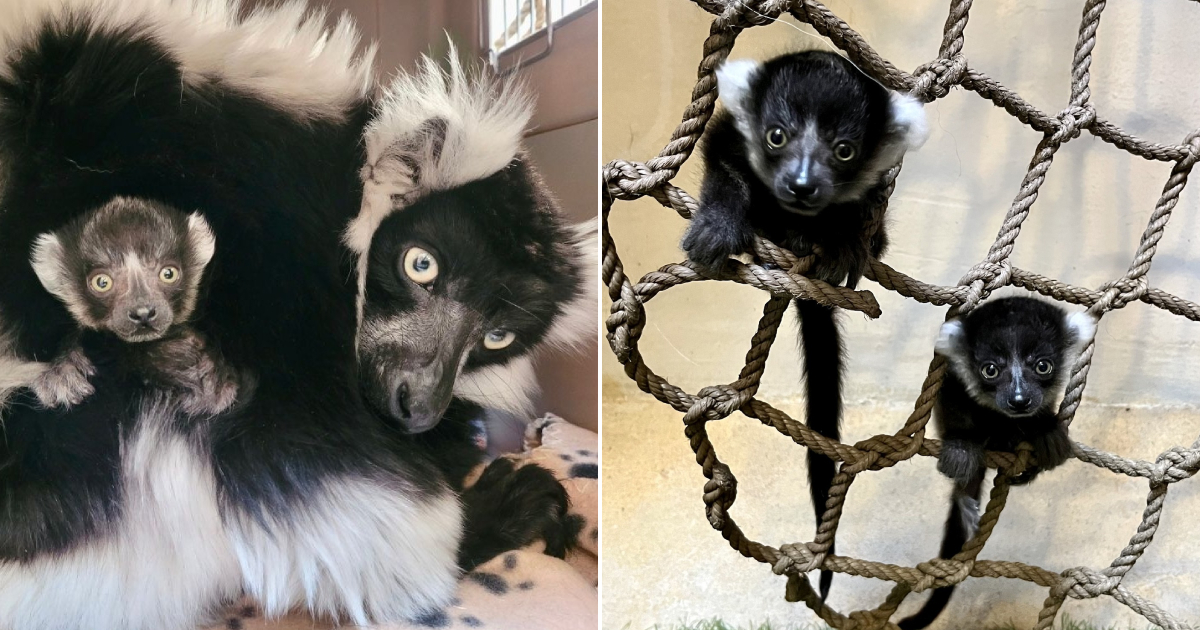OH BABY!! Birth of Critically Endangered Black-and-White Ruffed Lemurs!

We are excited to announce the arrival of three critically endangered black-and-white ruffed lemurs. On April 25th, Mom Morombe gave birth just three days after her 13th birthday. Each of the three infants weighed less than 100 grams, roughly the weight of a medium-sized tomato, at the time of their birth. Morombe gave birth to one male and two females.

Black-and-white ruffed lemurs have a gestation period of three months. They are one of the few primate species that commonly give birth to multiple offspring. Unlike many other primate species, the mothers carry their young in their mouths instead of on their backs. Dad Tanjaka will assist Morombe in protecting the nest until the babies are weaned, which typically occurs around 7 months of age.
Lemurs can have up to six babies in a litter, although triplets are more common. The young lemurs remain in their nest for approximately three weeks and become as mobile as their parents by around 7 weeks of age. This morning, the babies made their first public appearance and can now be seen in our Primate House. Our keepers have taken measures to ensure their safety, including the addition of extra hammocks and climbing nets to aid their movement. We have also placed wood wool, a material resembling straw, on the ground to cushion any falls, as this is one of the major hazards for lemurs in Madagascar.
Madagascar is the sole natural habitat of lemurs worldwide, housing over 100 different lemur species. Sadly, nearly all lemur species are endangered. The pet trade and the increasing demand for agriculture pose significant threats to their survival. You can contribute by being a conscious consumer. Choosing sustainably sourced wood furniture, musical instruments, and household goods is an excellent way to avoid supporting the illegal export of wood from Madagascar.






